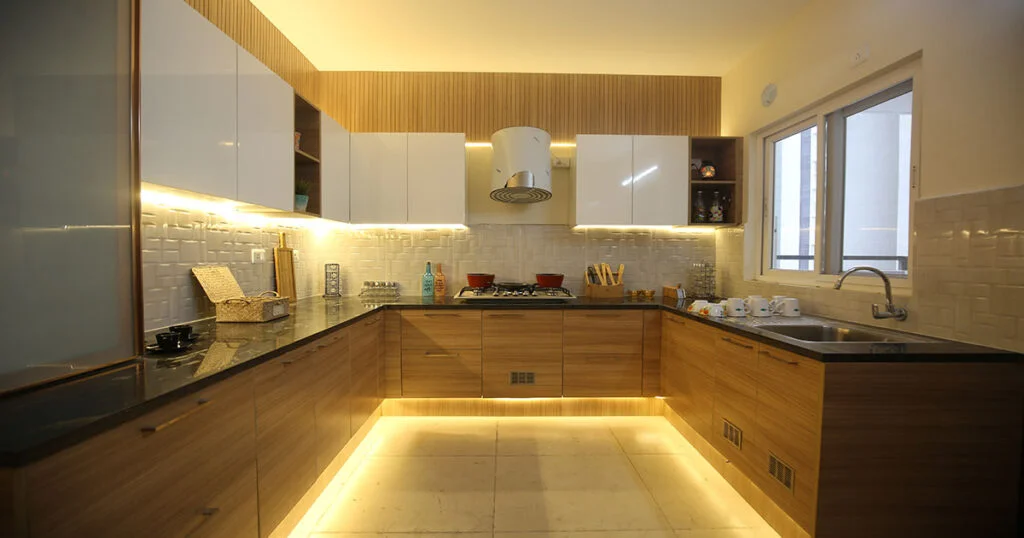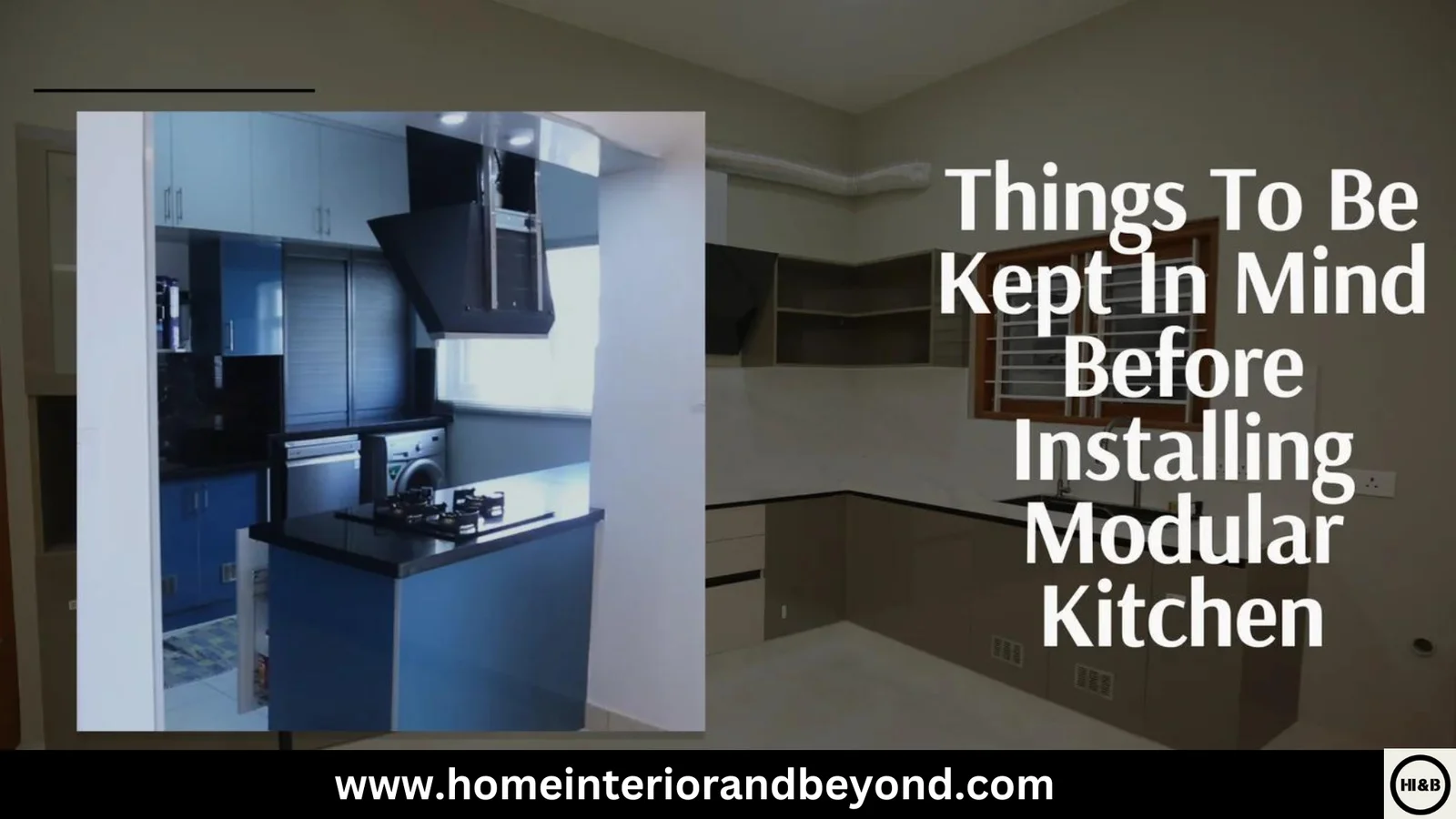Thinking of upgrading to a modular kitchen?
It’s a fantastic choice for modern homes due to its sleek design and functionality. But before jumping in, there are several factors to consider to ensure you get the most out of your investment. From the layout to the materials, here’s a checklist that will help you avoid costly mistakes and create a kitchen space that’s both practical and aesthetically pleasing.

Key Considerations Before Installing a Modular Kitchen
A modular kitchen can transform your cooking space into something beautiful and functional. Here are some simple tips to keep in mind before you start your installation:
1. Measure Your Space
Start by measuring your kitchen carefully. Know the dimensions of your walls, and take note of where plumbing and electrical outlets are located. Getting the right measurements is important for a good fit!
2. Choose the Right Layout
Think about how you use your kitchen. Popular layouts like L-shape, U-shape, or galley work well for different spaces. A good layout helps create an efficient cooking area where everything is within reach.
3. Plan for Storage
Consider what you need to store. Modular kitchens offer many options, like pull-out drawers and tall cabinets. Make a list of your kitchen items to help decide on the best storage solutions.
4. Select Materials Wisely
Choose materials that suit your style and budget. Plywood, MDF, and particleboard are common choices. Think about how they’ll hold up against moisture and daily use, and pick finishes that match your home.
5. Set a Budget
Before you start, set a clear budget. Prices can vary, so know how much you want to spend on materials, installation, and appliances. This will help you make smart choices along the way.

6. Consider Your Appliances
Make sure your kitchen design fits your appliances. Measure your fridge, oven, and microwave to ensure they’ll fit and have enough room for ventilation. A well-planned kitchen makes cooking easier!
7. Plan Your Lighting
Good lighting is key in a kitchen. Combine different types of lighting—like overhead lights and under-cabinet lights—to create a bright, welcoming space. It helps you see what you’re doing while cooking.
8. Ensure Good Ventilation
A well-ventilated kitchen prevents smoke and odors. Plan for a range hood or exhaust fan that matches your design and cooking style. This will keep your kitchen fresh and comfortable.
9. Consider Professional Help
While DIY might seem tempting, hiring professionals can save time and ensure everything is done right. They can spot potential issues and make sure your kitchen looks great.
10. Think About the Future
Your needs might change over time, so design a kitchen that can adapt. Choose flexible layouts and storage solutions that can be updated as your lifestyle evolves.
Conclusion
Installing a modular kitchen can be an exciting project! By keeping these tips in mind, you’ll create a space that’s not only beautiful but also perfect for your cooking needs. Take your time to plan, and you’ll end up with a kitchen you love for years to come.
FAQs:
What is the ideal layout for a modular kitchen?
The ideal layout depends on your kitchen space. L-shaped, U-shaped, and straight kitchens are popular options. L-shaped is great for small spaces, while U-shaped offers more storage and workspace for larger kitchens.
How can I maximize storage in my modular kitchen?
You can maximize storage by incorporating smart solutions like pull-out drawers, corner units, and tall cabinets. Customizing storage to fit your needs will ensure optimal use of space.
What are the most durable materials for modular kitchens?
Materials like plywood, MDF, and particleboard are commonly used for modular kitchen cabinets. For countertops, granite and quartz are highly durable and require minimal maintenance.
How should I plan appliance placement in my kitchen?
To optimize efficiency, follow the kitchen work triangle principle—placing the stove, sink, and refrigerator at strategic points to minimize unnecessary movement.
Why is ventilation important in a modular kitchen?
Good ventilation is crucial to prevent smoke, grease, and odors from accumulating in the kitchen. Installing a chimney or exhaust fan ensures proper air circulation.




